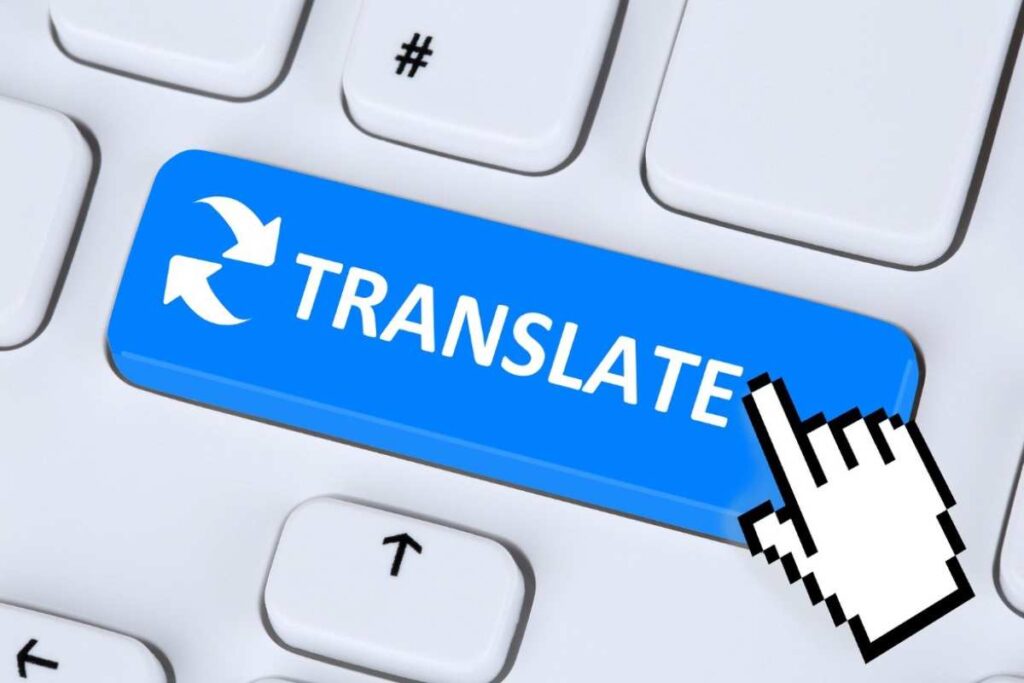English is one of the most widely spoken and used languages in the world. It plays a key role in professional, academic, and personal communication. Every day, countless English translations are carried out daily to support global communication. Whether for legal documents or digital content, some types of translations are more commonly requested than others. For that reason, in this article, we explore the most common English translations and why they are important in different contexts.

The most common English translations
1. Translation of official documents
Firstly, English translations of official documents are crucial for legal, immigration, and administrative purposes. In particular, some of the most commonly translated documents include:
- Birth, marriage, and death certificates
- Identification documents and passports
- Criminal records
- Wills and notarized powers of attorney
- Medical certificates
Moreover, these types of translations often require certification or legalization to be valid before official institutions. Therefore, accuracy is of utmost importance to ensure their legitimacy.
2. Academic translations
Moreover, many educational institutions request translated documents for international student admissions or degree recognition. So, the most common academic translations include:
- Diplomas and university degrees
- Academic transcripts
- Letters of recommendation
- Essays and research papers
- Course and training certificates
In this case, this type of translation must ensure the accuracy of technical terms while maintaining the original document format.
3. Business document translations
Therefore, as international trade and globalization continue to grow, the needed for English translations in the corporate world has increased. As a result, some of the most commonly translated business documents include:
- Commercial contracts and agreements
- Financial and accounting reports
- Business plans
- Corporate presentations
- Employee manuals
Thus, accurate translation of these documents is crucial to avoid misunderstandings and ensure compliance with international regulations.
4. Technical translations
Moreover, technical translation covers a wide range of industries, including engineering, IT, and medicine. For example, some documents requiring translation are:
- User manuals
- Patents and product documentation
- Technical specifications
- Laboratory reports
- Medical protocols
Thus, this type of translation demands specialized knowledge of the field to ensure the correct use of specific terminology.
5. Digital content and marketing translations
With the boom in digital marketing, English content translation has become a priority for businesses looking to expand into international markets. In this context, some of the most requested translations in this field include:
- Websites and online stores
- Social media posts
- Advertisements and marketing campaigns
- Blogs and SEO articles
- Newsletters
In addition, for this type of translation, linguistic accuracy is important, but cultural adaptation is also crucial to effectively connect with the target audience.
6. Book and literary translations
The literary world also requires English translations to reach a global audience. Thus, the most commonly translated texts in this field include:
- Novels and short stories
- Poetry
- Plays
- Biographies and memoirs
- Literary essays
In this case, fidelity to the author’s style and tone is essential to preserve the essence of the work in the target language.
7. Audiovisual translations
Moreover, the rise of digital entertainment has increased the need for translations in the audiovisual sector. Thus, some of the most common translations include:
- Subtitles for movies and TV shows
- Dubbing and voice-over
- Screenplays for television and film
- Transcription of interviews and podcasts
Notably, this type of translation must not only be accurate but also consider cultural and contextual aspects to ensure a better reception by the audience.
8. Personal correspondence and document translations
Therefore, people who need to communicate with English speakers rely on translation services for various personal purposes. Some of the most common translations in this area include:
- Personal letters and emails
- Event invitations
- Speeches and presentations
- Personal statements
- Cover letters and résumés
Thus, these translations must reflect the appropriate tone and clearly convey the intended message.
Conclusion
In conclusion, English translations are indispensable in multiple sectors and contexts, from legal procedures to marketing strategies and personal communication. Because of that, accuracy, cultural adaptation, and fidelity to the original content are key to ensuring an effective translation. Therefore, if you need document translations, it is advisable to rely on specialized professionals who can guarantee the quality and accuracy of the final result.




